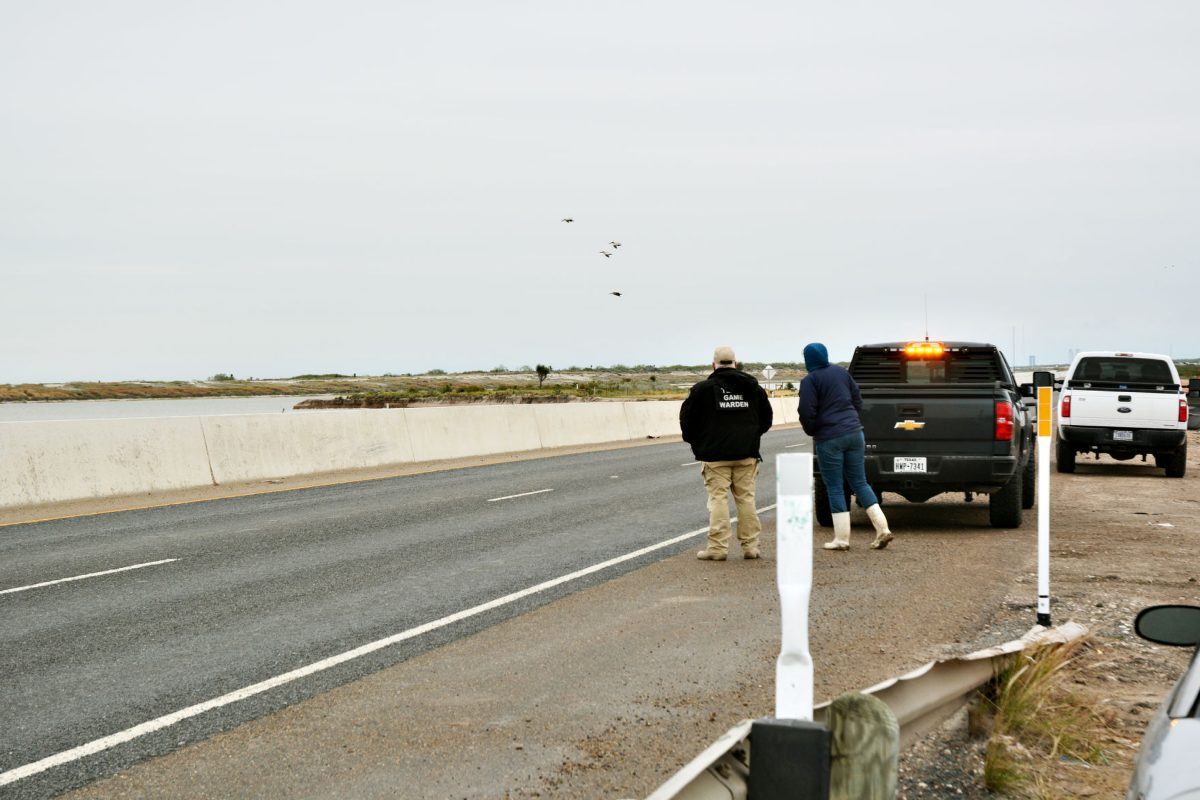The Texas Department of Transportation will soon begin installing barriers along a portion of Highway 48 to help save the lives of Brown pelicans on the roadway.
Construction crews are dismantling the outside barriers in the area and will replace them with new ones that will have spaces in them to help mitigate the vortex that occurs when cold fronts move through the Rio Grande Valley. Right now the barriers are solid.
“We had a natural phenomenon causing danger to the Brown pelican and the traveling public,” TxDOT Spokesman Octavio Saenz said. “The pelicans would land but they had trouble taking off.”
The Texas A&M Transportation Institute conducted the study “Computational Fluid Dynamics” for TxDOT that determined the feasibility of replacing the outside walls that would reduce an air vortex in the area. TxDOT then started to develop the preliminary design of the outside barrier that will be made up of concrete and metal. It will be the first of its kind used in the state of Texas.
The new design should arrive within the next week and the installation of the barriers should begin in about four to five weeks. It is from 0.38 miles west of the Bahia Grande to 0.58 miles east of Bahia Grande. It will take about five months to complete providing the weather cooperates. The project’s cost is $2.4 million.
“The whole purpose is to improve the safety of the pelicans and mitigate that wild life crossing risk,” Saenz said. “Safety is our main concern…Hopefully, it will be ready to go so that this upcoming season we can mitigate that phenomenon that had been occurring annually.”
Pelican fatalities on Highway 48 have occurred over the past several years and they occur as soon as cold weather moves into the Valley.
On Oct. 22, 2018, more than 40 pelicans were struck and killed by motorists traveling on the highway from Brownsville to Port Isabel.
Saenz said whenever there were strong northerly winds of 20 mph or more the pelicans were unable to take off. TxDOT in January 2015 installed pelican poles — such as was done in Florida — that were to help the pelicans gain more altitude when they flew through the area.
Although TxDOT did a road kill study in 2015 and 2016 that indicated the poles were working to “some degree,” the study also revealed the pelicans were changing their flight patterns and were flying around the poles instead of over them.
TxDOT hopes the new barriers will prevent pelican deaths.
Boyd Blihovde, refuge manager at Laguna Atascosa National Wildlife Refuge, said he’s hopeful that this is the only thing that is needed and is the solution to help the pelicans from “getting knocked down by the wind” as they land on the road.
He said he was and is still inspired by the community and volunteers who showed up to rescue the pelicans from the roads. “Once they (the pelicans) were knocked there on the road they couldn’t really fly. It took people to go out and really risk their lives to get the pelicans off the road and save them from being hit by cars.”
“In some cases they were attempting to slow vehicles down but in other cases they were just running out and watching for traffic and trying to get the birds off the road. Luckily nobody got hurt,” Blihovde said.
He estimates the volunteers helped save hundreds of pelicans over the past two years.
“Hopefully, this year our cold fronts don’t come too early and the contractor has time to finish the job and we will be able to see if it works…hopefully this will be all that’s needed,” Blihovde said.
lmartinez@brownsvilleherald.com





